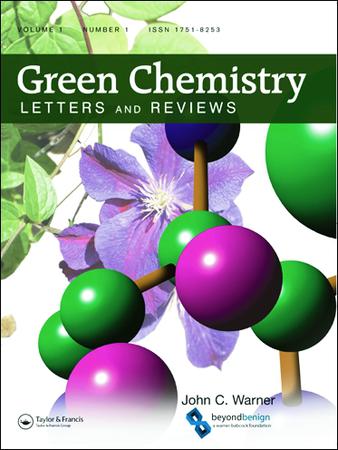把亚胺合成的压力:柑桔汁作为反应介质在入门有机实验室
IF 5.8
3区 化学
Q1 CHEMISTRY, MULTIDISCIPLINARY
引用次数: 1
摘要
本文章由计算机程序翻译,如有差异,请以英文原文为准。
Putting the squeeze on imine synthesis: citrus juice as a reaction medium in the introductory organic laboratory
ABSTRACT
A less hazardous and energy efficient reaction performed using freshly squeezed citrus juice as solvent has been designed and implemented within a sophomore level organic chemistry laboratory. The primary learning objectives are to enable students to (i) identify and reflect upon various green chemistry principles such as waste prevention, atom economy, less hazardous synthesis, use of safer chemicals, catalysis, design for energy efficiency, and inherently safer chemistry for accident prevention; (ii) use proton NMR spectroscopic data to characterize a synthesized Schiff base (imine); and (iii) describe the reaction mechanism for imine formation, including the reasoning for why citrus juice is an excellent reaction medium. Specifically, 4-nitrobenzaldehyde is combined with 4-methoxyaniline at room temperature in the presence of four different fruit juices as reaction media to successfully synthesize an imine that is expensive to procure commercially. This is followed by students undertaking reduction of the imine to form a secondary amine which has a dramatically distinct color due to the disruption in conjugation. In performing this overall reductive amination, students expand their knowledge on acid-catalyzed imine synthesis and its mechanism, strengthen their practical skills in the laboratory, and reflect on green chemistry principles within the context of fundamental organic reactivity. GRAPHICAL ABSTRACT
求助全文
通过发布文献求助,成功后即可免费获取论文全文。
去求助
来源期刊

Green Chemistry Letters and Reviews
CHEMISTRY, MULTIDISCIPLINARY-GREEN & SUSTAINABLE SCIENCE & TECHNOLOGY
CiteScore
9.10
自引率
3.00%
发文量
48
期刊介绍:
Green Chemistry Letters and Reviews is an Open Access, peer-reviewed journal focused on rapid publication of innovative new syntheses and procedures that reduce or eliminate the use and generation of hazardous materials. Reviews of state-of-the-art green chemistry technologies are also included within the journal''s scope.
Green Chemistry Letters and Reviews is divided into three overlapping topic areas: research, education, and industrial implementation. The journal publishes both letters, which concisely communicate the most time-sensitive results, and reviews, which aid researchers in understanding the state of science on important green chemistry topics. Submissions are encouraged which apply the 12 principles of green chemistry to:
-Green Chemistry Education-
Synthetic Reaction Pathways-
Research and Process Analytical Techniques-
Separation and Purification Technologies-
Renewable Feedstocks-
Degradable Products
 求助内容:
求助内容: 应助结果提醒方式:
应助结果提醒方式:


